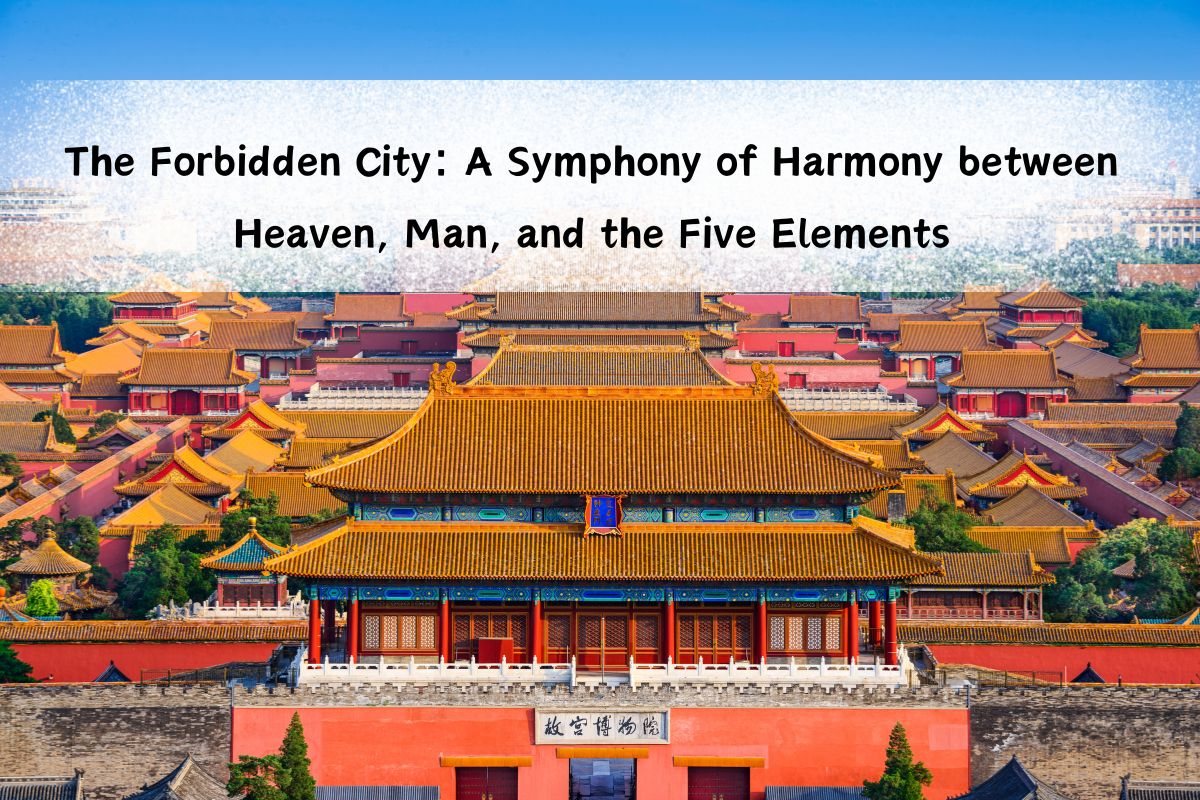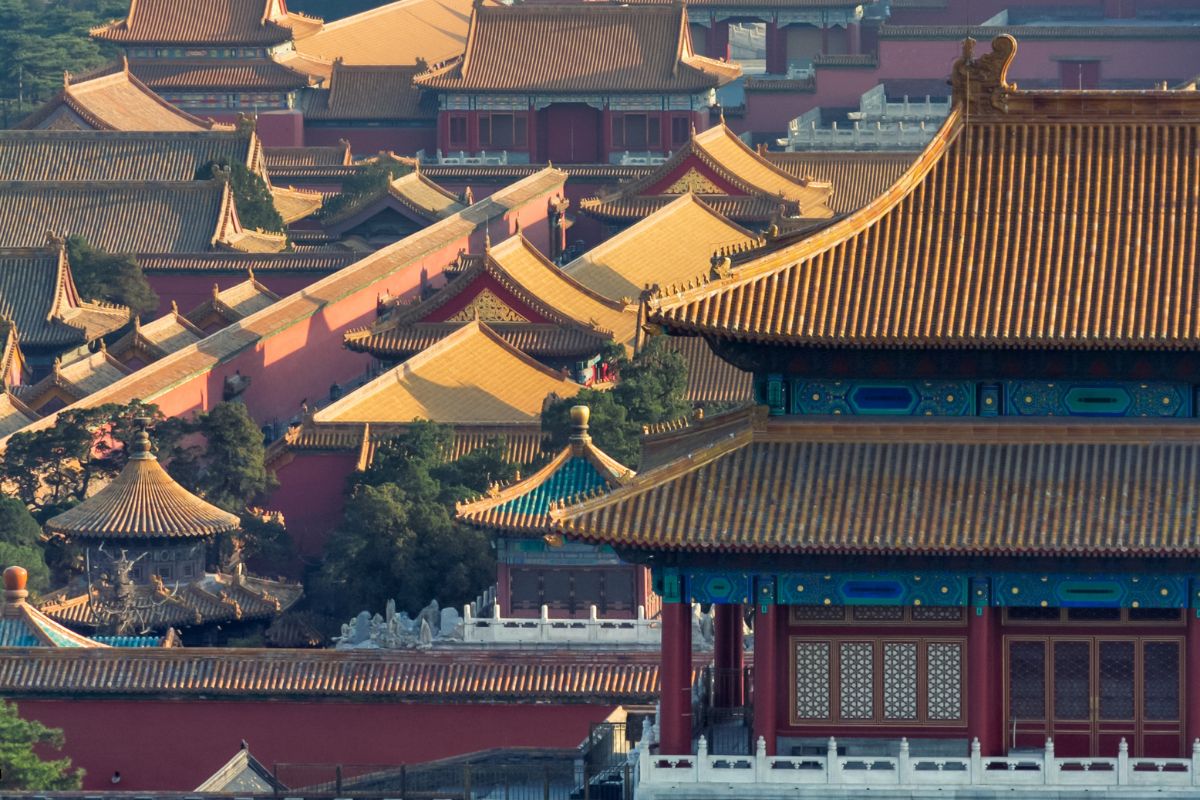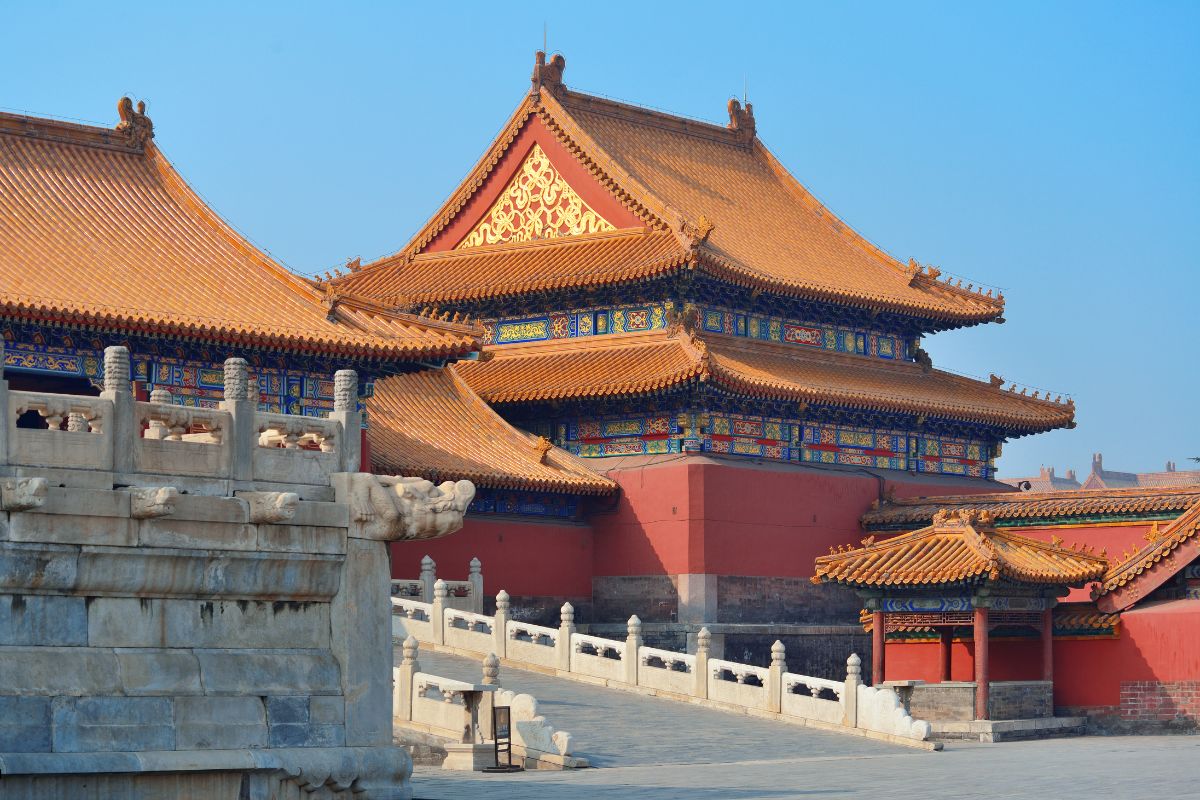The Forbidden City: A Symphony of Harmony between Heaven, Man, and the Five Elements
With a long and illustrious history, China boasts numerous historical sites, and the Forbidden City, as a brilliant gem among them, is undoubtedly magnificent and awe-inspiring. Its fame owes much to its outstanding design philosophy and intricate architectural art, with the most acclaimed highlight being the perfect unity of its macro layout and micro details. This article will provide a detailed introduction to its greatness!

The Forbidden City, this ancient and magnificent imperial palace王宫(wáng gōng), with its exquisite layout, resembles a three-dimensional history book unfolding before the eyes of the world. Stepping into the Forbidden City is like entering a meticulously designed spatial narrative, where every corner and every palace gate hides marvelous wonders that elicit admiration.
王宫 (wáng gōng), noun, palace
Examples:
- The royal family resides in the grand palace.
皇室一家居住在宏伟的王宫里。
huáng shì yī jiā jū zhù zài hóng wěi de wáng gōng lǐ。 - Tourists marveled at the intricate architecture of the ancient palace.
游客们对古代王宫复杂的建筑艺术赞叹不已。
yóu kè men duì gǔ dài wáng gōng fù zá de jiàn zhú yì shù zàn tàn bù yǐ。
The Cosmic Philosophy of Harmony Between Heaven and Man
The design of the Forbidden City is deeply influenced by the philosophy哲学(zhé xué) of "harmony between heaven and man." The entire architectural complex mimics celestial patterns, with the central axis extending north to south symbolizing the axis between heaven and earth, embodying the harmonious unity between humanity and nature. Walking along the central axis feels like traversing the cosmic order, experiencing the supreme majesty of the royal society. From the Meridian Gate to the Gate of Divine Might, important palaces such as the Hall of Supreme Harmony, the Hall of Central Harmony, and the Hall of Preserving Harmony are sequentially arranged along this line, showcasing the imperial architecture's lofty grandeur and harmonious symmetry, making the imperial hierarchy clear at a glance. The internal spatial layout of the Forbidden City emphasizes the concept of "front for court affairs, rear for living quarters," where the front half serves as the public area for imperial court affairs, while the back half is the private domain for the emperor and his family. This layout embodies the ancient Chinese ritualistic thinking, creating a clear distinction between state affairs and family life, balancing solemn ceremonial aspects with the royal family's privacy and tranquility.

哲学 (zhé xué), noun, philosophy
Examples:
- She delved into the realm of Eastern philosophy.
她深入研究了东方哲学的领域。
tā shēn rù yán jiū le dōng fāng zhé xué de lǐng yù。 - The professor's lectures on moral philosophy were thought-provoking.
教授关于道德哲学的讲座引人深思。
jiào shòu guān yú dào dé zhé xué de jiǎng zuò yǐn rén shēn sī。
In its design, the Forbidden City also incorporates the concepts of the Five Elements and Eight Trigrams. For instance, the choice of colors in the architecture, the orientation settings, etc., align with the principle of mutual generation and restraint among the Five Elements, aiming to achieve balance and harmony in feng shui. This integration of philosophical ideas into architectural design transforms the Forbidden City into not just a palace but a colossal work of art, imbued with profound cultural connotations.
The Harmonious Utilization of the Colors of the Five Elements
The Forbidden City cleverly employs the ancient Chinese theory of the Five Elements in its color design, creating a visually pleasing spectacle that is both harmonious and rich in symbolic meaning. The Five Elements - metal, wood, water, fire, earth - not only represent the five basic elements of nature but are also seen as fundamental forces shaping the world. In the selection and combination of colors, the design of the Forbidden City fully embodies the principle of the mutual generation of the Five Elements, creating a sense of aesthetic balance depicting the dynamic harmony among all things in the universe. The warmth of fire and the dignity of earth The most well-known colors of the Forbidden City are the vivid red palace walls and the shining yellow glazed tiles.

Red, associated with fire in the Five Elements, symbolizes passion, vitality, and auspiciousness. The extensive use of red on the walls not only evokes a strong visual impact but also signifies the prosperity and flourishing of the nation. Yellow, corresponding to the earth element, is the royal exclusive color, symbolizing the central authority, the land, and abundant harvests. The roofs of the Forbidden City are covered with yellow glazed tiles, showcasing the supreme and majestic authority of the monarchy. The combination of red walls and yellow tiles, besides being aesthetically pleasing, also forms a "fire nurtures earth" relationship in the Five Elements, symbolizing the prosperous national fortune and the stable imperial authority. The growth of wood and the nourishment of water While green and blue may not be as prominent as red and yellow in the main structures of the Forbidden City, a careful observation reveals their delicate use as auxiliary colors.
Green often appears in the decorative details of the palaces, representing wood in the Five Elements, symbolizing growth and development, echoing the exuberant vitality of the natural world. Although blue, representing water, might not be prominently displayed, it is embodied through numerous water features within the Forbidden City, such as the moat and the Golden Water River. Water nurtures all things and complements wood, enhancing the overall harmony and vitality of the Forbidden City.

The restraint of metal and the balance of the whole In the Forbidden City, gold is often used for decoration, such as roof ornaments and window details. Gold belongs to the metal element and symbolizes wealth, prosperity, and constraint. It contrasts with other colors, neither flamboyant nor negligible, making the entire palace complex appear more brilliant yet dignified. Gold can generate water, echoing the water features in the Forbidden City, further perfecting the cyclical relationship of the Five Elements and deepening the philosophical significance of the color design of the Forbidden City.
The greatness of the Forbidden City lies in its transcendence of time restrictions, becoming a timeless cultural symbol that allows every visitor to feel a sense of awe and enlightenment in the depths of their soul. It teaches us that architecture is not merely a dwelling but also a vessel for culture and philosophy, a bridge for dialogue between humans and nature, and the universe. Let us carry this realization as we continue to explore and protect this precious human cultural heritage, ensuring that the glory of the Forbidden City endures forever,